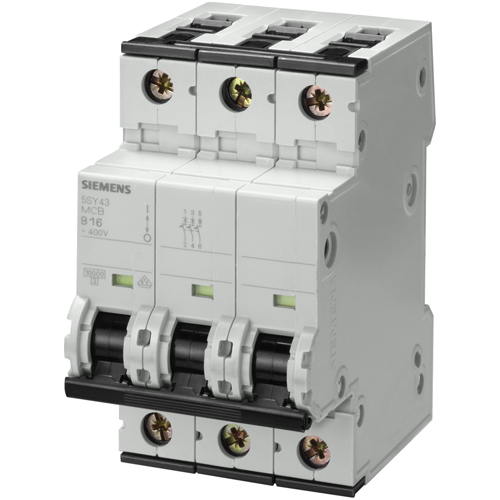What is MCB?
MCB or Miniature Circuit Breakers is a mechanical switching device which is capable of making, carrying and breaking currents under normal circuit conditions and also making, carrying for a specified time and automatically breaking currents under specified abnormal circuit conditions such as those of short circuit. So we can say that MCB is used as a protection device for overload and short circuit protection. In fact it is a manually or automatically operated electrical switch designed to protect an electrical circuit from damage caused by overload or short circuit. The basic function of any miniature circuit breaker MCB is to detect a fault condition and interrupt current flow.
An early form of circuit breaker was described by Thomas Edison in an 1879 patent application, although his commercial power distribution system used fuses. If we ask the question from our self that what is purpose of miniature circuit breaker MCB the answer is to protect lighting circuit wiring from accidental short-circuits and overloads and its basic function is to detect a fault condition and interrupt current flow. MCB does not require replacement as compared to a fuse which operates only once and after it is disconnected or burnt we must replace a fuse, by contrast a miniature circuit breaker can be reset either manually or automatically in order to resume normal operation. Circuit breakers are used to protect an individual household appliance up to large switchgear designed to protect high voltage circuits feeding an entire city.

Usage of Miniature Circuit Breaker
MCB or Miniature Circuit Breaker is commonly used in low voltage electrical network instead of fuse. It automatically switches off the electrical circuit during abnormal condition of the network means in over load condition as well as faulty condition. As the switch operating knob comes at its off position during tripping, the faulty zone of the electrical circuit can easily be identified. It is mostly costlier as compared to fuses but more reliable as well.
Miniature Circuit Breaker Construction & Working principle
Miniature circuit breaker construction is very simple, robust and maintenance free. A miniature circuit breaker has normally three main constructional parts.
- Frame of Miniature Circuit Breaker which is a molded case, rigid, strong, insulated housing in which the other components are mounted.
- Operating Mechanism of Miniature Circuit Breaker that provides the means of manual opening and closing operation of miniature circuit breaker.
- Trip Unit of Miniature Circuit Breaker that is the main part, responsible for proper working of miniature circuit breaker.
MCB has three-positions “ON,”“OFF,” and “TRIPPED”. The external switching latch can be in the “TRIPPED”position, if the MCB is tripped due to over-current. When we manually switch off the MCB, the switching latch will be in “OFF” position. In close condition of MCB, the switch is positioned at “ON”. So it is very easy to understand the current condition of any MCB by observing the positions of the switching latch i.e. whether it is closed, tripped or manually switched off.
Working Principle of MCB
There are two arrangement of operation of miniature circuit breaker. One due to thermal effect of over current and other due to electromagnetic effect of over current.The thermal operation of miniature circuit breaker is achieved with a bimetallic strip whenever continuous over current flows through MCB, the bimetallic strip is heated and deflects by bending. This deflection of bimetallic strip releases mechanical latch. As this mechanical latch is attached with operating mechanism, it causes to open the miniature circuit breaker contacts. But during short circuit condition, sudden rising of electric current, causes electromechanical displacement of plunger associated with tripping coil or solenoid of MCB. The plunger strikes the trip lever causing immediate release of latch mechanism consequently open the circuit breaker contacts. This was a simple explanation of miniature circuit breaker working principle.
Advantages of miniature circuit breaker MCB vs Typical Fuse
- MCB automatically switches off the electrical circuit during abnormal condition of the network means in over load condition as well considering it as faulty condition.
- The fuse does not sense but Miniature Circuit Breaker does it in more reliable way.
- MCB is much more sensitive to over current than fuse.
- By using the MCB the faulty zone of the electrical circuit can easily be identified which is not easy in case of fuse.
- Immediate restoration of circuit is big advantage of miniature circuit breakers after fault is removed.
- Handling of miniature circuit breaker MCB is more electrically safe than fuse.
- There is no disadvantage of miniature circuit breaker MCB over fuse other than the fact that MCB is costlier than fuse unit system.
Discover more from Electrical Engineering 123
Subscribe to get the latest posts to your email.

